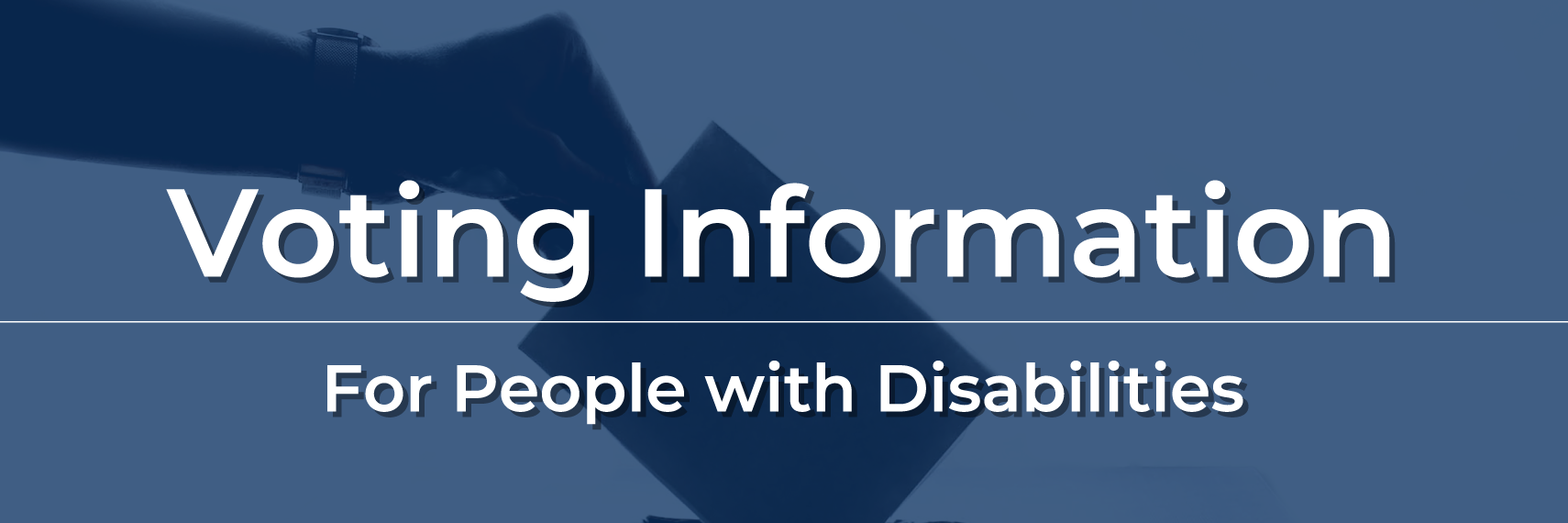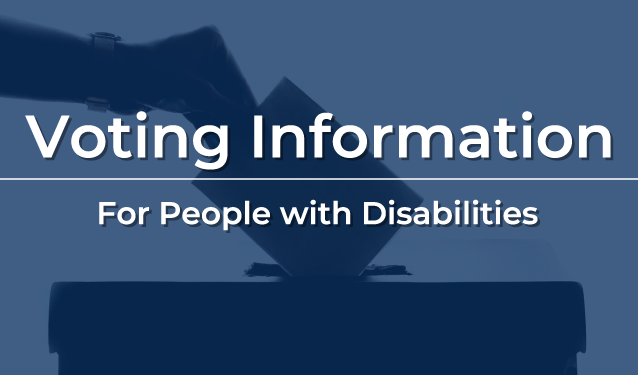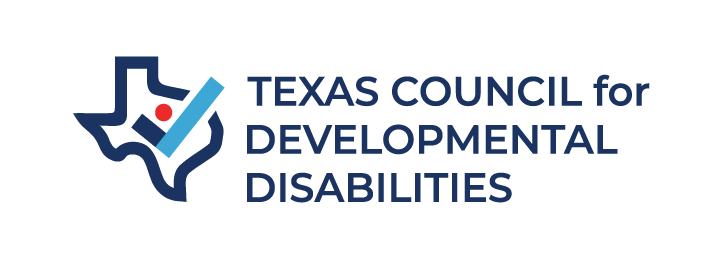

Table of Contents
Voting Information for People with Disabilities
The 2024 primary elections are coming up on Tuesday, March 5. People with disabilities and their family members should review important dates, voting locations, and available voting resources ahead of time to have their voting plan ready. Your vote matters, and voting is one of the most impactful ways to participate as a member of your community.
Important Dates and Deadlines
Tuesday, Feb. 20: First day of early voting.
Friday, Feb. 23: Last day to apply for a ballot by mail. Your application must be received by Feb. 23, not just postmarked.
Friday, March 1: Last day of early voting.
Tuesday, March 5: Election Day! Ballots by mail must be received by 7 p.m. on March 5 if the carrier envelope is not postmarked. If the carrier envelope is postmarked by 7 p.m. on Election Day, it can be received on Wednesday, March 6.
Find Your Polling Location
Polling locations are the sites where people voting in person can cast their vote. To make your voting experience easier, determine where your polling location is ahead of time. Polling locations can sometimes change; make sure to plan for a back-up location in case your voting site is closed.
You can find your polling location through My Voter Portal. To find your polling locations, you will submit your name, county, date of birth, and ZIP code. After submitting your information, you will be shown upcoming elections in your county and polling locations for each election. My Voter Portal also provides resources on how to register to vote, changing your name or address, and tracking mailed ballots.
Voting with a Disability
In collaboration with partners in the disability community, TCDD developed this video to share essential voting information for people with disabilities and poll workers. The video covers topics such as voting with accommodations and how poll workers can support voters with disabilities.
Voters with disabilities can receive assistance when registering to vote and when casting ballots. If you need assistance to vote at a polling location, here are some things to know.
Getting a Ride to the Polls
- If you get a ride to a polling location and you are in a group of seven or more people who are not members of your family, then the person providing transportation must fill out a form with their name and address and indicate whether they provided voting assistance to anyone they transported.
- When you arrive at a polling location, tell a poll worker that you are a voter who needs help to vote. You do not have to provide proof of your disability.
Going by Yourself
- If you are unable to enter a polling location, then you can ask a poll worker to bring your ballot to the entrance of the polling location or to a vehicle parked at the curbside of the polling location. After you complete your ballot, the poll worker will collect it and put it in the ballot box for you. You can also ask to have another person of your choice bring you your ballot, collect it, and put it in the ballot box.
- If you go by yourself to a polling location, you may want to call ahead so poll workers will be ready to assist you when you arrive.
Who Can Help You
- You can receive help to vote from: (A) any person you choose who is not a poll worker, (B) two poll workers on Election Day, or (C) one poll worker during early voting.
- You cannot receive help from: (A) your employer, (B) an agent of your employer, or (C) an officer or agent of your union, if you are a member of one.
- A person who helps you must fill out a form that states the person’s name, address, and relationship to you (for example, the person could be a friend or relative). The person must also sign an oath that you are eligible to receive assistance to vote.
Casting Your Ballot
- The person helping you must read the entire ballot to you unless you ask to have only parts of the ballot read to you.
- The person helping you must take an oath that they will not try to influence your vote. If needed, the person can mark your ballot but must do so exactly as you direct them.
- If you choose to get help from a poll worker, then poll watchers and election inspectors can watch you vote, and poll watchers can inspect your ballot to ensure it was marked as you directed. However, if you are helped by someone who is not a poll worker, no one else can watch you vote.
- The person helping you vote cannot tell anyone how you voted.
Voting by Mail
- The last day to apply to vote by mail is Friday, Feb. 23. Remember, your application must be postmarked and received no later than Feb. 23 to be considered. Learn more about how to vote by mail.
- Ballots by mail must be received by 7 p.m. on March 5 if the carrier envelope is not postmarked. If the carrier envelope is postmarked by 7 p.m. on Election Day, it may be received on Wednesday, March 6.
Your Vote Counts
If you have any problems registering to vote or casting your ballot, then you can call the Disability Rights Texas (DRTx) hotline at 1-888-796-VOTE (8683) or email vote@drtx.org. DRTx staff trains people with disabilities on voting rights, surveys polling places for accessibility, works with election officials, and responds to legislative inquiries.
Primary elections are pivotal for determining our elected leaders. Your vote and your opinions matter! Casting your vote as a person with disabilities is a way to share your unique perspective. You can find more information about voting and available resources on the TCDD website.
